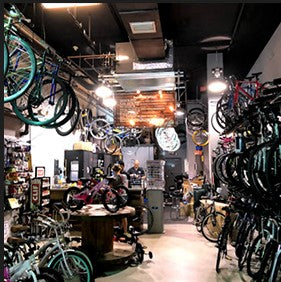From New York’s Highline to Miami’s Underline
February 20 2016 – Ezekiel Binns

Following the success of New York’s Highline comes the immense boom in developmental proposals for revitalizing the often neglected areas surrounding urban infrastructure. The Highline has become a paradigm solution to the ubiquitous weariness of bridges, underpasses, and other transit hindrances.
After experiencing a biking accident three years ago, Meg Daly began taking Miami’s Metrorail to get to physical therapy. The idea for developing the abundance of space underneath the rails was conceived during one of her walks under the metro; what's usually hot and exhausting during a summer in Miami wasn't while trailing under the shadow casting infrastructure. At that point Daly used her background in sales and marketing to spearhead the project, talking to officials in various municipal divisions such as the transit department. Completely supportive of the idea, the transit department then suggested Daly undertake the project herself.

photo source
Funded by ambitious developers and designed by a collective of several globally recognized architects, the community altering highline originates from humble beginnings. Converted from a discontinued central railroad, the aerial greenway spans almost one and a half miles through Manhattan's west side, bringing tourism and revenue to the neighboring communities.
The repurposed viaduct rests 30 feet above ground level, where it serves as a linear parkway as it features an abundance of pedestrian paths, cultural attractions and thriving vegetation. However, in all its experiential glory, the Highline lacks bike routes. In fact, the highline does not even prohibit the use of bikes along its refurbished trail.
Luckily, for Miamians at least, James Corner Field Operations plans to bring the highline down under. As one of the urban design studios attributed in completing the Highline in New York, James Corner Field Operations has experience with with creating the master plans for authentic large scale urban spaces.
Rather than resting on top of an abandoned railway, The Underline will trail beneath 10 miles of Miami’s Metrorail. Like The Highline, the space being restored in this project is underutilized and neglected as a direct result of its positioning to nearby urban infrastructure. Behind it all is the developer and entrepreneur Meg Daly. Daly’s mission is not only to give second life to this disregarded path but to “connect downtown and the Miami River Greenway on the north and to the proposed Ludlam Trail and the existing South Dade Trail on the south” while safely bringing together all modes of transit. Rail, Car. Bus, Bike and Foot.

The proposed design is overlaid on top of the already existent but, feeble bike trail called the M-Path. Along with widening the path, Field Operations plans to add a parallel, pedestrian path that will span at least 8 feet in width along side the cycle path. Featured with the 10 miles of explorable pathways would be an assortment of recreational attractions. Proposed are dog parks, exercise stations, sports courts, gardens, mobile bike repair kiosks and a skateboard rink that conveniently doubles as a programmable event space.

According to Field Operations the project estimates the total cost of The Underline at around $120 million. Attributing to such a high estimate is the proposal of the pathway featuring considerate modifications to the 36 roadway intersections that interrupt the tranquil continuity of the ten mile path costing approx. $20 million; at least 5 of the intersections will undergo heavier modifications as they are planned to have sloping pedestrian and bike bridges. Just as the New York Highline brought in substantial revenue to surrounding areas, the same is projected for the economic payoffs of Miami’s proposed Underline. As a study of the current potential economic impact is underway, developers, supporters and friends of the Underline are expanding on ways to use the surplus in tax revenue to fund many aspects of the project, specifically the construction.

In order to gain more support, rather than showing anymore digital plans, Meg Daly and Developers plan to begin construction on a $5 million dollar Brickell portion this year. Featuring “picnic pockets,” a dog park, an outdoor gym and an Oolite Room that have a play area and a climbing wall built around an existing natural rock, hopes are that the physicality of the Brickell segment will serve as a “demonstration” phase. As optimistic as Daly and the developers are, both do understand the importance of executing the first stage as deliberately as possible, “We want to show that we’re serious, but we also hope to have enough built so that it’s meaningful.” concludes Daly.


A parallel effort is now under way along the privately owned Ludlam Trail — like the Metrorail line once a corridor for the Florida East Coast railroad. This project will be turning most of the 6-mile corridor, which parallels Ludlam Road, into a walking and cycling trail and linear park. The Ludlam and Underline trails would connect at Dadeland.
For more details, read the article by Miami Herald.


